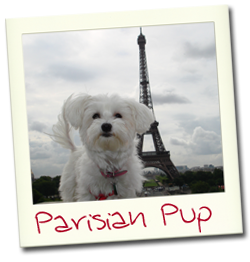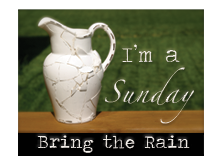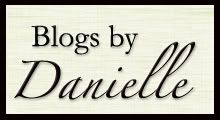 Edinburgh is the capital of Scotland and its second largest city, after Glasgow. Edinburgh is 45 miles away from Glasgow and it is in the south-east of Scotland, on the east coast of Scotland's "Central Belt", on the south shore of the Firth of Forth, on the North Sea and, because of its rugged setting and vast collection of Medieval and Georgian architecture including numerous stone tenements, it is one of the most dramatic cities in Europe. Edinburgh has been the capital of Scotland since 1437 (replacing Scone) and is the seat of the Scottish Parliament.
Edinburgh is the capital of Scotland and its second largest city, after Glasgow. Edinburgh is 45 miles away from Glasgow and it is in the south-east of Scotland, on the east coast of Scotland's "Central Belt", on the south shore of the Firth of Forth, on the North Sea and, because of its rugged setting and vast collection of Medieval and Georgian architecture including numerous stone tenements, it is one of the most dramatic cities in Europe. Edinburgh has been the capital of Scotland since 1437 (replacing Scone) and is the seat of the Scottish Parliament.
Because of the limited time we had to spend in Edinburgh, the major attraction we wanted to spend time to see was the Edinburgh Castle. When you think of a castle...this is exactly what you would think of.
I was blown away with how the castle dominates the skyline of Edinburgh and the unbelievable beauty of something so old! HA! OK, this is a little better!
OK, this is a little better! Edinburgh Castle is an ancient fortress which, from its position atop Castle Rock (perched on an extinct volcano), dominates the sky-line of the city of Edinburgh. Human habitation of the site is dated back as far as the 9th century BC. A rich mix of architectural styles reflects the castle's complex history and role as both stronghold and seat of Kings. The tiny St Margaret's Chapel, Edinburgh's oldest building, dates from the 1100s. Crown Square, the principal courtyard, was developed in the 15th century, the Great Hall with its impressive hammerbeam roof was built by James IV in 1511. The Half Moon Battery was created in the late 16th century; and the Scottish National War memorial was added after the First World War.
Edinburgh Castle is an ancient fortress which, from its position atop Castle Rock (perched on an extinct volcano), dominates the sky-line of the city of Edinburgh. Human habitation of the site is dated back as far as the 9th century BC. A rich mix of architectural styles reflects the castle's complex history and role as both stronghold and seat of Kings. The tiny St Margaret's Chapel, Edinburgh's oldest building, dates from the 1100s. Crown Square, the principal courtyard, was developed in the 15th century, the Great Hall with its impressive hammerbeam roof was built by James IV in 1511. The Half Moon Battery was created in the late 16th century; and the Scottish National War memorial was added after the First World War.
 There was so much to see on the castle site. One of the highlights was the crown jewels (this was the 2nd set of crown jewels we saw on this European adventure)! The Scottish crown jewels are also known as "The Honors of Scotland". They consist of a crown, sword and sceptre. On the Union of the Crowns in 1603, the Scottish crown jewels were left in Scotland when King James VI of Scotland inherited the English throne. By the Treaty of Union in 1707, which united the Scottish and English parliaments in London, the Scottish regalia were to stay in Scotland. Also on display with the jewels is the Stone of Destiny, which was returned to Scotland from Westminster Abbey in 1996.
There was so much to see on the castle site. One of the highlights was the crown jewels (this was the 2nd set of crown jewels we saw on this European adventure)! The Scottish crown jewels are also known as "The Honors of Scotland". They consist of a crown, sword and sceptre. On the Union of the Crowns in 1603, the Scottish crown jewels were left in Scotland when King James VI of Scotland inherited the English throne. By the Treaty of Union in 1707, which united the Scottish and English parliaments in London, the Scottish regalia were to stay in Scotland. Also on display with the jewels is the Stone of Destiny, which was returned to Scotland from Westminster Abbey in 1996. Another highlight was the One O'clock Gun. The One O'Clock Gun is fired every day (except Sunday) at precisely 13:00, allowing citizens and visitors to check their clocks and watches. The origin of the tradition lies in the days when sailing ships in the Firth of Forth were able to check and reset their chronometers in the days before accurate timepieces were available.
Another highlight was the One O'clock Gun. The One O'Clock Gun is fired every day (except Sunday) at precisely 13:00, allowing citizens and visitors to check their clocks and watches. The origin of the tradition lies in the days when sailing ships in the Firth of Forth were able to check and reset their chronometers in the days before accurate timepieces were available.
In 1861 Captain Wauchope, a Scottish Naval Officer in the Royal Navy invented the time ball, still seen today on top of Nelson's Monument, Calton Hill. At one o'clock the ball drops giving the signal to sailors, but this meant that someone would have to be looking out for it and it often couldn't be seen in foggy weather.
So, in the same year the gun was fired simultaneously to the time ball dropping. Originally an 18-pound muzzle loading cannon which needed four men to load and fire was fired from the Half Moon Battery. The gun could be easily heard by ships in Leith Harbour (2 miles away). The cannon was replaced with a 25 pound Howitzer in 1953 and is now fired from Mill's Mount Battery on the North face of the Castle.
Although, the gun is no longer required for its original purpose it has become a popular tourist attraction. They chose 1 o'clock because, well, they were cheap!! If they were to fire the cannon at 12PM then they would have to fire 12 cannons where at 1PM you only have to fire 1!












No comments:
Post a Comment